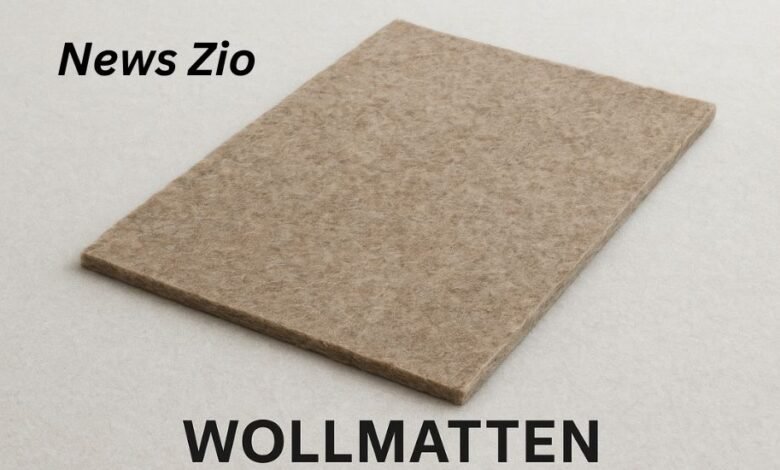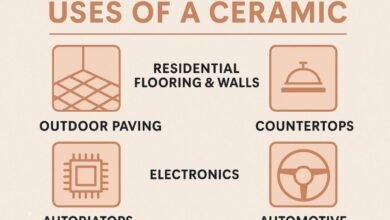Wollmatten for Home, Garden, and Construction

In today’s world, where sustainability, health, and ecological responsibility are becoming more and more important, natural materials are experiencing a revival. One product that is gaining attention across multiple fields – from home interiors and gardening to construction and environmental engineering – is wollmatten. These mats, made primarily from sheep’s wool, are processed into robust, breathable, and multi-purpose sheets.
This article explores the properties, applications, benefits, limitations, and market potential of wollmatten, offering a complete overview of this remarkable natural material.
What Are Wollmatten?
“Wollmatten” refers to mats or sheets produced mainly from sheep’s wool. Through felting, needle punching, or special manufacturing techniques, dense and durable textiles are created. Wollmatten come in various thicknesses and dimensions – from thin felts for craft projects to heavy-duty geotextiles for erosion control or insulation.
They are renewable, biodegradable, and versatile, which makes them one of the most interesting natural products in today’s eco-conscious markets.
Technical Properties of Wollmatten
For a material to work across so many industries, it must offer special physical and chemical qualities. Wool provides exactly that:
-
Thermal conductivity: ~0.040 W/(m·K), similar to cellulose or wood fiber.
-
Specific heat capacity: ~1,300 J/(kg·K), good for heat storage.
-
Vapor diffusion resistance (μ): 1–2, making it highly breathable.
-
Moisture handling: Wool can absorb and release moisture without losing much of its insulating ability.
-
Indoor air quality: The protein structure of wool can bind and neutralize aldehydes (such as formaldehyde) and volatile organic compounds (VOCs).
-
Fire classification: B2/E, which means “normally flammable.”
This unique profile makes wollmatten valuable in both construction and gardening as well as in household applications.
Wollmatten in Home & Interior Design
In living spaces, wollmatten are often used as carpets, runners, or underlays. Blogs and lifestyle magazines emphasize their strengths:
-
Natural & eco-friendly: Free from synthetic fibers and ideal for a healthy indoor climate.
-
Durability: Long-lasting and resilient with proper care.
-
Design flexibility: Available in different colors, textures, and thicknesses.
Especially in minimalist, Scandinavian, or eco-friendly design concepts, wollmatten are popular. Their ability to store heat and absorb sound makes them practical for studios, bedrooms, or children’s rooms.
Wollmatten in Gardening
One of the most common uses of wollmatten is winter protection for plants. Gardeners wrap pots, root balls, or trunks with them. Benefits include:
-
Insulation: Prevents soil and roots from freezing.
-
Breathability: Avoids condensation and mold buildup.
-
Practicality: Easy to cut, reuse, and secure around pots.
-
Eco-friendly: Fully biodegradable; can be composted after use.
Commercial examples include rolls of 50 × 150 cm with 4 mm thickness, sold from around €8–10. Matching wool cords are often provided for fastening.
Wollmatten in Construction & Acoustics
The building industry is increasingly turning toward natural insulation. Here, wollmatten are applied as:
-
Insulation for walls, roofs, and ceilings
-
Impact sound and acoustic insulation
-
Technical insulation for HVAC and pipes
Their benefits are:
-
Strong heat and sound insulation
-
Moisture buffering to reduce mold risk
-
Indoor air improvement through VOC absorption
Limitations also exist:
-
Higher price compared to mineral wool
-
Need for mothproofing and fire treatment
-
Market share in Germany below 0.5% – still a niche solution
Wollmatten in Environmental Engineering
A fascinating field of application is erosion control. Natural geotextiles made from wool are unrolled across slopes, riverbanks, or construction sites. Their advantages:
-
Soil stabilization: Prevents erosion by holding soil in place.
-
Water storage: Wollmatten can hold 3–4 times their volume in water.
-
Plant growth support: They slowly decompose, enriching soil with nutrients.
-
Eco-benefits: Unlike synthetic geotextiles, they leave no harmful residues.
This makes wollmatten an attractive choice for sustainable landscaping and ecological engineering projects.
Wollmatten in Crafts & Creativity
Beyond practical use, wollmatten are a favorite in arts and crafts:
-
Used for felting, sewing, and decoration projects
-
Popular in needle-felting or wet-felting techniques
-
Employed as a base material in creative design, fashion, or accessories
Colorful wool felt sheets are widely available and remain a staple for DIY enthusiasts.
Advantages of Wollmatten
-
Excellent insulation and acoustic values
-
Renewable, natural, and biodegradable
-
Improves indoor air quality by absorbing pollutants
-
Flexible applications across home, garden, construction, and art
-
Pleasant to touch and visually appealing
Disadvantages of Wollmatten
-
Higher cost compared to conventional alternatives
-
Normally flammable; requires special treatments
-
Vulnerable to moth infestation without protective finishing
-
Still limited availability in mainstream markets
Market Outlook for Wollmatten
The global push for eco-friendly building materials and sustainable products is creating a larger space for wollmatten. Areas with high potential growth include:
-
Green construction
-
Urban gardening
-
Environmental restoration projects
The key challenge is to lower costs and raise awareness among consumers about the unique benefits of wollmatten.
Conclusion
Wollmatten are true multi-talents: they protect plants in winter, insulate buildings sustainably, improve indoor air, stabilize slopes, and inspire creative craft projects. Their ecological benefits are undeniable, even if price and the need for additional treatments remain hurdles.
For anyone committed to nature, health, and sustainability, wollmatten are an excellent choice that combines tradition with modern ecological needs.
Published by News Zio – Your blog for sustainable trends and innovations.


